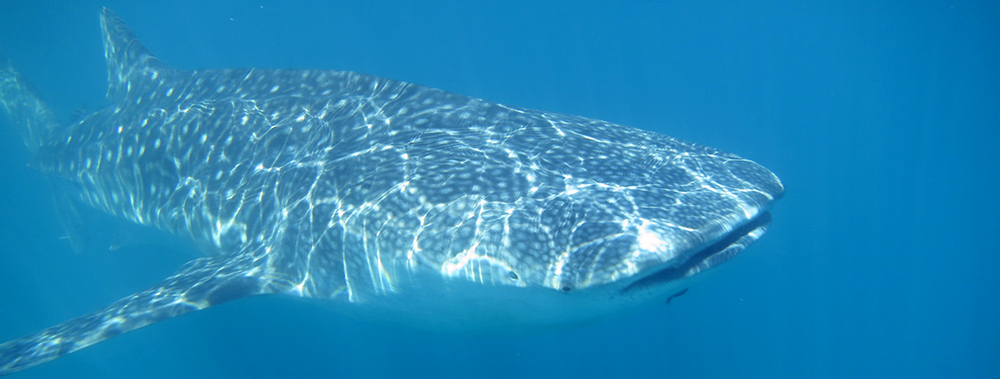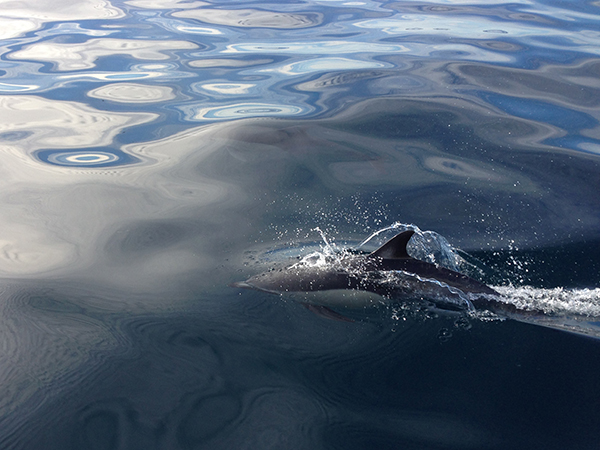Well, we did it. We left. It was a long time coming. We’ve been planning this transition for seven years. That’s right, seven years! Most of that time was spent saving up money to buy a boat. And once we bought her we were saving to outfit her for offshore sailing. We have spent most of that money and a whole lot of time updating systems and fixing the many things that broke along the way. For the past year we have lived aboard Orion and we love the lifestyle. I think we’ll love it even more once we make it to the tropics… which should happen any day now, I suppose.
We left our home slip in Moss Landing, CA on the morning of December 27th and slowly made our way south. Our plan was to sail, without stopping for more than a rest, to Marina Del Rey (300 miles south in Los Angeles), where we would visit with friends and family for a week or so. We were a bit nervous leaving in the winter since the storms in Central CA can be intense and pervasive. Just a week earlier a fellow liveaboard sailor from Moss was heading south and had to get rescued by the coast guard when his engine failed, his sails ripped, and he got knocked down (pushed over sideways to the point that the mast is horizontal) several times in apparently 60kt winds. Fortunately, our experience was completely different. We left Moss on a sunny, brisk, calm day. With a hundred Pacific white-sided dolphins escorting us out of the Monterey Bay we waved goodbye to the tell-tale Moss Landing smoke stacks that guided us home time and time again. As we rounded Point Piños, the southern tip of the Monterey Bay, the wind completely died. Eager to make some progress south we fired up the motor and didn’t shut it down for 24 hours. With the motor rumbling we glided south with the rugged coastline of Big Sur passing slowly on our port side. We took turns “on watch” in three hours stints during which we were in charge of steering our course, monitoring the surroundings, and, most importantly, staying awake in the middle of the night. When not on watch we made food for each other, slept, plotted our course, and did whatever suited our fancy at the time. Our first night watches were especially lovely. As the sun set the night drew a blanket of calm solitude over Orion. Gliding through the darkness with the rhythmic pulse of the water on the hull and the moon light bending this way and that over the waves, we eased into our new life.
The highlight of the night was the bright bioluminescence sparkling in the slick black water. Dolphins came to check on us periodically throughout the night. Alerted by the soft whooshing sound of a blow we’d look up to see multiple light torpedos shooting toward the bow and riding with us for a time. It was so beautiful! Even using the head was a magical experience as the flush of the saltwater toilet in darkness sent whirls of stars spinning down the drain!
The following morning the wind came up from the northwest so we decided to pass right on by our first planned stop in Morro Bay under full sail. What was amazingly awesome about this portion of the passage was not only were we finally sailing but we also had our first opportunity to test-drive our newly installed Hydrovane! A Hydrovane is a mechanical self-steering device that steers the boat at a set angle to the wind. As long as the wind blows from the same direction Orion will stay on course. When the wind shifts this way or that we simply pull a line to adjust the Hydrovane and our course stays true. It is similar to a servo pendulum wind vane except instead of connecting to the boat’s rudder to steer the boat it uses its own rudder. This type of vane is perfect for center cockpit boats like Orion because we don’t have to clutter up the back deck with lines running forward to the steering wheel. Another benefit is that the Hydrovane acts as backup rudder in case our main rudder ever fails. We also appreciate that that wind vanes in general don’t require electricity (and drain our batteries) and have a long history of being extremely reliable. For now the only downside is that we can’t use it when we are motoring. But that will change once we set up the small, portable electric autopilot we have stashed in the v-birth.
Learning to use the Hydrovane took about a half hour and then… Look Ma No Hands! Alleviating the need to steer is a huge a game changer, especially since the Hydrovane steers better than us! Now our watches consist of reading, playing guitar, making/eating food, star gazing, and checking the compass every once in a while. We are in LOVE with this addition to the crew… she loves her job, doesn’t eat the stores, and never needs to sleep!











You write so wonderfully. I feel like I’m right there in the boat with you!
Thanks so much Beth! Glad to bring you along on our journey